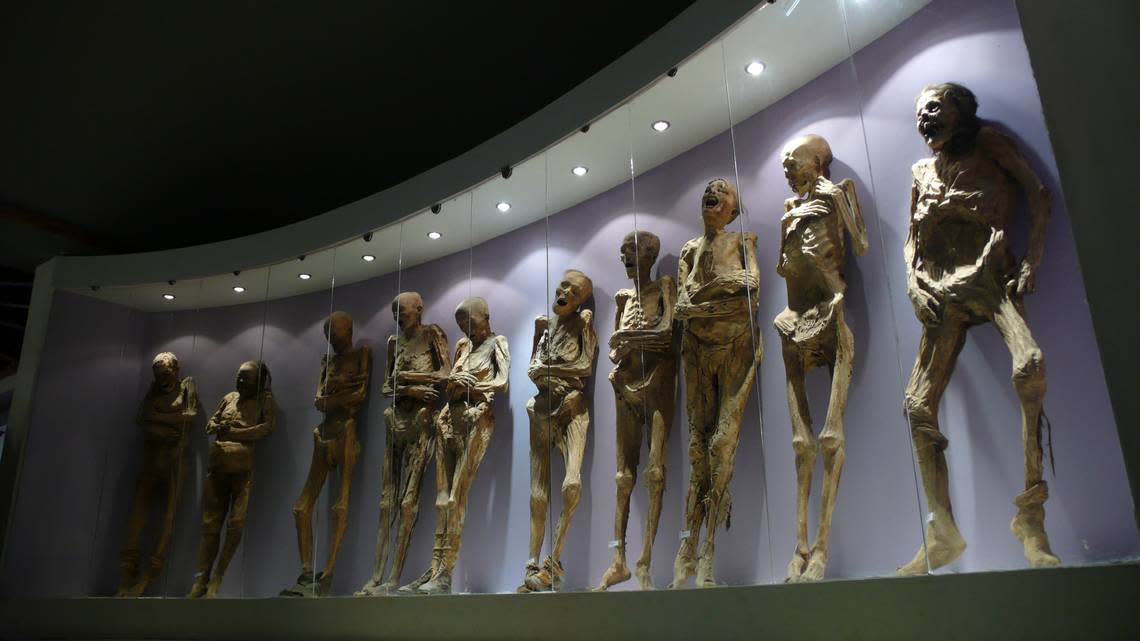Signs of life in mummy exhibit in Mexico have experts worried for those who get close

A traveling exhibit of several accidental mummies sparked concerns after Mexican officials spotted signs of life on one mummy, experts said.
The Mummies of Guanajuato are a unique collection of mummies from the 1800s, the Associated Press reported. The deceased were accidentally mummified after being “buried in crypts in dry, mineral-rich soil” of Guanajuato, Mexico, the outlet reported.
No one knows why the bodies mummified instead of disintegrating. Some attribute it to the local climate while others believe the crypts caused it, the Associated Press reported.
The mummies were discovered in 1865 by surprised cemetery workers who were removing the remains “of people whose relatives couldn’t afford to pay” graveyard fees, National Geographic reported.
The Mummies of Guanajuato, as they became known, are now on display at the Museo de las Momias de Guanajuato, according to the museum website.
Most recently, some of the mummies were part of a traveling exhibit and on display at a tourism convention in Mexico City from March 26 to 29, the Guanajuato government said in a new release. During the first day of the convention, over 5,000 people visited the mummies.
Mexico’s National Institute of Anthropology and History expressed concerns about this exhibition, according to a March 31 statement. The institute said it was not alerted about the display and did not authorize or advise on the transportation, handling or presentation conditions of the mummies.
Experts saw photos of the display and spotted signs of possible fungal growths on one mummy, the institute said in its statement. The signs of life worried experts because of the possible biohazard concerns — yet lack of safeguards — and the danger of damage to the fragile mummies.
The municipal president of Guanajuato, Alejandro Navarro, said in a release that the mummies were transported under strict protocols and in adherence with expert recommendations.
Mexico’s National Institute of Anthropology and History asked Guanajuato officials to allow the institute to analyze the mummies and collaborate in management of the remains.
Mexico City is about 220 miles southeast of the mummies’ usual museum display in Guanajuato.
Google Translate was used to translate the website of the Museo de las Momias de Guanajuato and news releases from the Guanajuato government and Mexico’s National Institute of Anthropology and History.
2,000-year-old Roman sanctuary — and nearby burial ground — uncovered in France
3,000-year-old severed hands found buried in pharaoh’s courtyard, archaeologists say
Melting permafrost reveals bodies of ancient Mongolians — and their diets, study says

